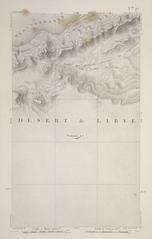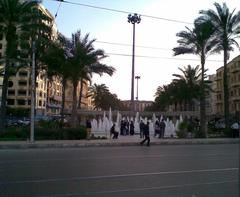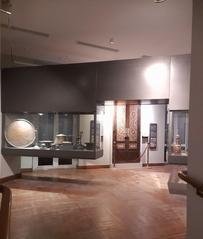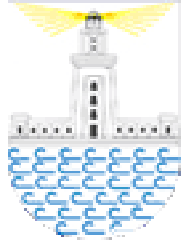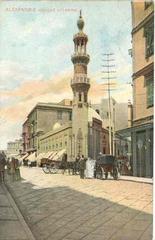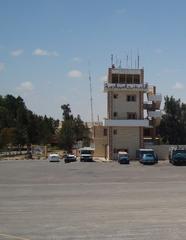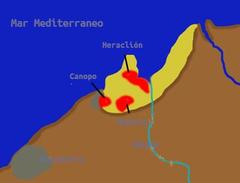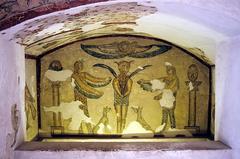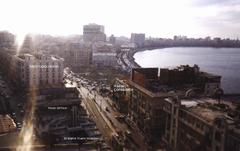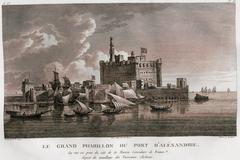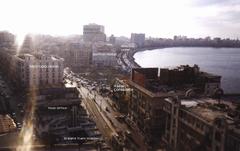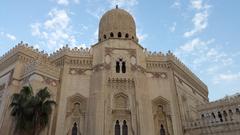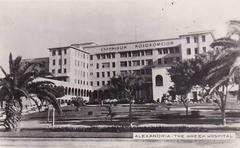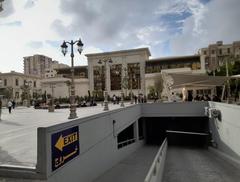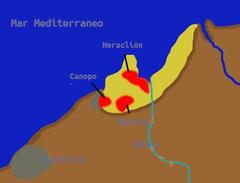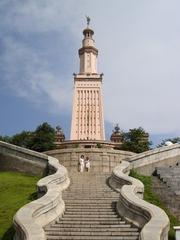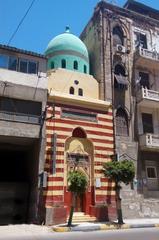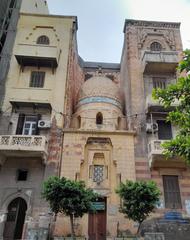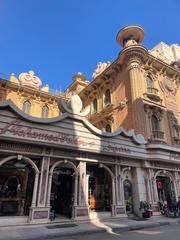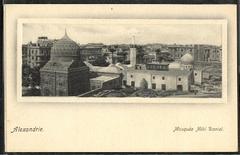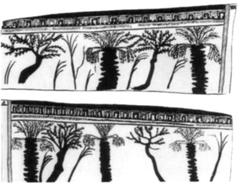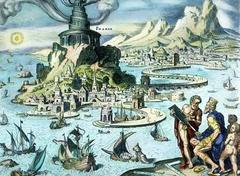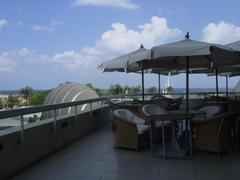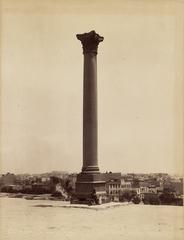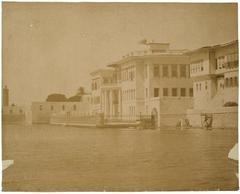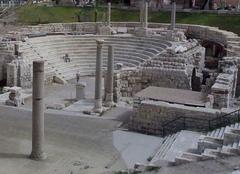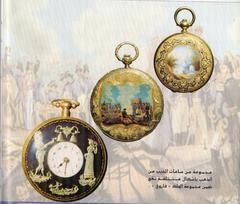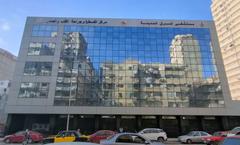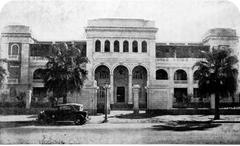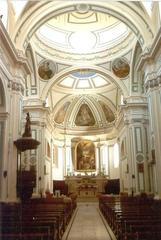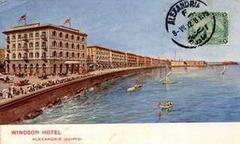Shallalat Gardens Visiting Hours, Tickets, and Alexandria Historical Sites Guide
Date: 14/06/2025
Introduction
Shallalat Gardens, also known as Sultan Hussein Park (حديقة الشلالات), stands as one of Alexandria, Egypt’s most beloved urban parks—a verdant retreat steeped in history and cultural significance. Situated in the heart of the city’s Royal Quarter and the Al Shatby neighborhood, this eight-acre oasis is much more than a scenic getaway. It is a living museum, showcasing remnants of ancient city walls from the Greco-Roman and Ptolemaic eras, lush landscaped terraces, cascading waterfalls, and tranquil lakes, all interwoven with Alexandria’s vibrant present-day community life.
Open daily with free admission, Shallalat Gardens welcomes everyone—from history enthusiasts and families to nature lovers and cultural explorers. Its proximity to other major attractions such as the Alexandria National Museum, Corniche promenade, and Kom El Deka archaeological site makes it a central stop in any Alexandria itinerary. Ongoing restoration and community efforts underscore its enduring importance as a social and cultural hub, contributing to urban regeneration while preserving the city’s layered heritage.
This guide offers detailed insights into the park’s history, cultural role, visitor information, travel tips, and links to trusted resources, ensuring a rewarding and well-informed visit to Shallalat Gardens.
Table of Contents
- Introduction
- Origins and Early Development
- Historical Significance and Urban Context
- Archaeological and Architectural Features
- Visiting Hours and Ticket Information
- Park Layout and Facilities
- Cultural and Community Role
- Preservation and Restoration Efforts
- Nearby Attractions and Suggested Itineraries
- Practical Travel Tips for Visitors
- Frequently Asked Questions (FAQ)
- Visuals and Interactive Content
- Conclusion
- References
Origins and Early Development
Shallalat Gardens owes its origins to the late 19th and early 20th centuries, developed atop Alexandria’s ancient eastern city walls, remnants of which date back to the Greco-Roman period with later additions from the Islamic and Ottoman eras. The transformation into a public garden began under Khedive Abbas II (1892–1914), reflecting a broader modernization drive and the desire to provide Alexandria’s urban population with green, recreational spaces. Officially named after Sultan Hussein Kamel, the park’s Arabic name, “Shallalat,” meaning “waterfalls,” pays homage to its original water features and artificial cascades (Egypt Today).
Historical Significance and Urban Context
Strategically positioned near Alexandria’s downtown and adjacent to historic fortifications, Shallalat Gardens has played a central role in the city’s urban planning. Its design, inspired by European landscape traditions, incorporates wide avenues, ornamental beds, and water features reminiscent of French and Italian styles, popular among Egypt’s early 20th-century elite. The park’s imported and native flora further enhance its exotic appeal (Egypt Today).
Shallalat Gardens has long served as a vital green lung and gathering place, evolving alongside Alexandria’s urban expansion and shifting social dynamics.
Archaeological and Architectural Features
A defining aspect of Shallalat Gardens is its integration of ancient stonework and modern landscaping. Visitors can observe substantial sections of Alexandria’s ancient city walls—massive limestone blocks from the Ptolemaic period—alongside restored marble fountains, decorative pavilions, and remnants of historic gates. Notably, archaeological excavations led by Calliope Limneos-Papakosta since 2007 have uncovered significant finds, including a marble statue of Alexander the Great, deepening the site’s historical intrigue (The Archaeologist; National Geographic).
Visiting Hours and Ticket Information
- Opening Hours: Generally open daily from 8:00 AM to 7:00 PM, with extended hours during summer (some sources note opening as late as 10:00 AM and closing as late as 11:00 PM; check ahead if visiting during holidays or special seasons) (URTrips).
- Tickets: Entry is free, making the gardens accessible to all. Donations for maintenance are appreciated.
- Guided Tours: Available via local tourism offices or certified guides, especially during periods of active archaeological excavation.
Park Layout and Facilities
Shallalat Gardens is divided into several sections, some named after prominent Egyptian cultural figures. The landscape features multi-level terraces, expansive lawns, and a diverse array of trees and shrubs, some artistically shaped to complement the European garden style (Ibn Battuta Travel; Egyptopia). Three artificial lakes, with swans and picturesque waterfalls, highlight the park’s appeal. Scattered benches, shaded seating, and decorative fountains offer spots for relaxation, while basic public restrooms are located near the main entrance.
Paths are generally accessible, though some uneven terrain and ongoing archaeological activity may pose challenges for visitors with mobility issues. Food vendors are often found near the entrances, but options inside the park are limited—bringing your own water and snacks is recommended.
Cultural and Community Role
Shallalat Gardens is a vibrant social and cultural focal point, hosting art exhibitions, educational workshops, and community gatherings. It’s a favorite site for family picnics, public celebrations, and informal artistic performances. The gardens are an everyday backdrop to Alexandria’s urban life, where local traditions, stories, and social rituals are continuously woven into the city’s collective memory (Emerald Insight).
Preservation and Restoration Efforts
Challenges such as urban encroachment, resource limitations, and gradual deterioration of historical features have prompted ongoing restoration projects. Local authorities, heritage organizations, and community groups collaborate to conserve ancient walls, restore pathways, replant native flora, and enhance accessibility. Recent mural projects and the installation of new signage highlight the commitment to both heritage preservation and public engagement (Academia.edu).
Nearby Attractions and Suggested Itineraries
Shallalat Gardens is centrally located, making it an excellent starting point for exploring other Alexandria historical sites:
- Kom El Deka: Roman-era archaeological site, a short walk away (Trek.zone).
- Alexandria National Museum: Comprehensive displays of the city’s history.
- Sadat Museum and Eliyahu Hanavi Synagogue: Important sites for modern and religious history.
- Bibliotheca Alexandrina and Corniche Promenade: Iconic cultural and waterfront destinations.
Nearby hotels range from the Steigenberger Cecil Hotel (4-star) to Tulip Hotel Alexandria (5-star), all within easy reach (URTrips).
Practical Travel Tips for Visitors
- Best Time to Visit: Early mornings or late afternoons for cooler temperatures and optimal lighting.
- What to Bring: Comfortable walking shoes, water, snacks, sun protection, and a camera.
- Accessibility: Main paths are paved, but some areas near ruins or ongoing digs may be less accessible.
- Safety: The gardens are generally safe, but keep an eye on personal belongings, especially during busy periods.
- Respect the Site: Help preserve the gardens by not climbing on ancient structures or disturbing archaeological areas.
Frequently Asked Questions (FAQ)
Q: What are the opening hours for Shallalat Gardens?
A: Generally 8:00 AM to 7:00 PM daily, with longer hours in summer. Some sources report later opening and closing times; always check ahead for current schedules.
Q: Is there an entrance fee?
A: No, entry is free.
Q: Are guided tours available?
A: Yes, through local tourism offices or certified guides.
Q: Is Shallalat Gardens wheelchair accessible?
A: Main paths are accessible, though some uneven areas may be challenging.
Q: Can I take photos inside the gardens?
A: Photography is permitted; avoid restricted areas.
Q: Are there food vendors inside?
A: Limited options; best to bring your own snacks and water.
Visuals and Interactive Content
To enhance your visit and trip planning, explore high-quality images of the gardens’ historic walls, terraces, lakes, and archaeological sites. Virtual tours, interactive maps, and descriptive alt tags (e.g., “Shallalat Gardens Alexandria historic walls and greenery”) are available on official tourism sites and the Audiala app.
Conclusion
Shallalat Gardens is a living testament to Alexandria’s enduring legacy—a rare fusion of ancient heritage and vibrant urban life. With free entry, accessible facilities, and a captivating setting, the gardens are essential for anyone seeking to experience Alexandria’s history, culture, and community spirit. Ongoing preservation and inclusive programming ensure that this green sanctuary will continue to inspire, educate, and unite generations of Alexandrians and visitors.
For the latest updates, community events, and detailed guides, download the Audiala app or visit Alexandria’s official tourism website (Alexandria Tourism). Immerse yourself in the tranquil beauty and rich history of Shallalat Gardens, and discover why this oasis remains at the heart of Alexandria’s identity.
